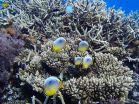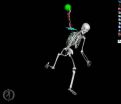Anti-HIV antibody shows promise in first human study
2015-04-08
(Press-News.org) A single infusion of an experimental anti-HIV antibody called 3BNC117 resulted in significantly decreased HIV levels that persisted for as long as 28 days in HIV-infected individuals, according to Phase 1 clinical trial findings published online today in Nature. Major funding for the research was provided by the Bill and Melinda Gates Foundation, The Rockefeller University, and supported in part by the National Institute of Allergy and Infectious Diseases (NIAID), a component of the NIH. The research was led by long-time NIAID grantee Michel C. Nussenzweig, M.D., Ph.D., of the Howard Hughes Medical Institute at The Rockefeller University in New York City.
Before its first-in-human testing, the 3BNC117 antibody had neutralized many diverse HIV strains in laboratory tests and had protected humanized mice and macaques from HIV and its simian equivalent. To determine if the investigational product would be safe and potentially effective in people, the research team conducted a small clinical trial among 29 volunteers, 17 HIV-infected and 12 uninfected individuals. Study participants received a single intravenous dose of 3BNC117 of 1, 3, 10 or 30 milligrams. The investigational product was well-tolerated by all participants. Among HIV-infected participants, 3BNC117 had the greatest effect on the eight participants who received the highest dose, resulting in significant and rapid decreases in viral load. HIV resistance to 3BNC117 was variable, but some individuals remained sensitive to the antibody for 28 days.
Based on the findings, the authors conclude that 3BNC117 is safe in people and can have a substantial effect on controlling HIV levels and should, therefore, be explored further for use in HIV prevention and treatment. Additionally, in the future the investigational antibody may be used to help eradicate HIV from latent reservoirs in an infected person's body, according to the authors.
INFORMATION:
ARTICLE:
Marina Caskey et al. Viraemia suppressed in HIV-1-infected humans by broadly neutralizing antibody 3BNC117. Nature DOI: 10.1038/nature14411 (2015).
WHO:
NIAID Director Anthony S. Fauci, M.D., is available for comment.
CONTACT:
To schedule interviews, please contact Robin Tricoles, (301) 402-1663, robin.tricoles@nih.gov.
NIAID conducts and supports research--at NIH, throughout the United States, and worldwide--to study the causes of infectious and immune-mediated diseases, and to develop better means of preventing, diagnosing and treating these illnesses. News releases, fact sheets and other NIAID-related materials are available on the NIAID website.
About the National Institutes of Health (NIH): NIH, the nation's medical research agency, includes 27 Institutes and Centers and is a component of the U.S. Department of Health and Human Services. NIH is the primary federal agency conducting and supporting basic, clinical, and translational medical research, and is investigating the causes, treatments, and cures for both common and rare diseases. For more information about NIH and its programs, visit http://www.nih.gov/.
NIH...Turning Discovery Into Health® END
ELSE PRESS RELEASES FROM THIS DATE:
2015-04-08
The four collaborating organizations are the American College of Nurse-Midwives; the American College of Obstetricians and Gynecologists; the Association of Women's Health, Obstetric and Neonatal Nurses; and the Society for Maternal-Fetal Medicine. Additionally, these organizations partnered with VitalSmarts, a research and training organization.
The report, "Transforming Communication and Safety Culture in Intrapartum Care: A Multi-organization Blueprint," follows previous research on safety concerns during childbirth and communication among labor and delivery teams. ...
2015-04-08
Washington, DC--Pesticide exposure, not obesity alone, can contribute to increased cardiovascular disease risk and inflammation in premenopausal women, according to a new study published in the Endocrine Society's Journal of Clinical Endocrinology & Metabolism.
The study looked at the effects of exposure to polychlorinated pesticides such as DDT. Although DDT was banned in many countries in the 1970s, it remains widespread in the environment and food supply.
DDT was one of the first recognized endocrine-disrupting chemicals, according to the introductory guide to endocrine-disrupting ...
2015-04-08
A collaboration led by Shigeyuki Yokoyama of RIKEN and Takashi Kadowaki and Toshimasa Yamauchi of the University of Tokyo has used the SPring-8 synchrotron facility in Harima, Japan to elucidate the structure of two receptors of adiponectin, a protein that is associated with obesity and diabetes. The researchers hope that in the future this work, which was published in Nature today, will pave the way toward designing drugs that target these two receptors, AdipoR1 and AdipoR2, to reduce the early mortality associated with diabetes.
Adiponectin, a hormone secreted by fat ...
2015-04-08
In the first results to emerge from HIV patient trials of a new generation of so-called broadly neutralizing antibodies, Rockefeller University researchers have found the experimental therapy can dramatically reduce the amount of virus present in a patient's blood. The work, reported this week in Nature, brings fresh optimism to the field of HIV immunotherapy and suggests new strategies for fighting or even preventing HIV infection.
In a person infected with HIV, there is an ongoing arms race between the virus and the body's immune system. Even as the body produces new ...
2015-04-08
In a feat that would have been unachievable only a few years ago, researchers at UC San Francisco have pulled aside the curtain on a protein informally known as the "wasabi receptor," revealing at near-atomic resolution structures that could be targeted with anti-inflammatory pain drugs.
Officially named TRPA1 (pronounced "trip A1"), the newly visualized protein resides in the cellular membrane of sensory nerve cells. It detects certain chemical agents originating outside our bodies--pungent irritants found in substances ranging from wasabi to tear gas--but is also triggered ...
2015-04-08
A new scientific synthesis suggests a gradual, prolonged release of greenhouse gases from permafrost soils in Arctic and sub-Arctic regions, which may afford society more time to adapt to environmental changes, say scientists in an April 9 paper published in Nature.
"Twenty years ago there was very little research about the possible rate of permafrost carbon release," said co-author A. David McGuire, U.S. Geological Survey senior scientist and climate modeling expert with the Institute of Arctic Biology at the University of Alaska Fairbanks. "In 2011, we assembled an ...
2015-04-08
Fish are the key ingredients in a new recipe to diagnose and restore degraded coral reef ecosystems, according to scientists from the Australian Institute of Marine Science, WCS, James Cook University, and other organizations in a new study in the journal Nature.
For overfished coral reef systems, restoring fish populations that perform key roles will in turn restore ecological functions critical to recovery. For moderately or lightly fished reefs, the recipe requires knowing which fish to catch, how many, and which to leave behind.
The authors assessed fish biomass ...
2015-04-08
EVANSTON, Ill. --- A new approach to analyzing baseball-pitching biomechanics may one day give players more personalized feedback and help prevent elbow injuries.
In a computer simulation study of baseball pitching, Northwestern University biomedical engineers found that the strength of the elbow muscles of a baseball pitcher likely play a bigger role in injury risk and prevention than previously thought.
The motion analysis approach currently used in the baseball industry to provide athletes with injury-risk feedback is not sophisticated enough to estimate what an ...
2015-04-08
April 8, 2015--Researchers at Columbia University's Mailman School of Public Health and Columbia Business School studied bed capacity --measured by the number of staffed beds -- in New York City hospital obstetrics units and found a significant excess number of beds, which overall cost the city an estimated $26.4 million each year. The findings, coupled with the current trends of an aging population and the declining birth rate, suggest that many obstetrics units could reduce their bed capacity and still assure timely access to care. Study findings are published in the ...
2015-04-08
CAMBRIDGE, Mass--Biologists at MIT and the Whitehead Institute for Biomedical Research have discovered a vulnerability of brain cancer cells that could be exploited to develop more-effective drugs against brain tumors.
The study, led by researchers from the Whitehead Institute and MIT's Koch Institute for Integrative Cancer Research, found that a subset of glioblastoma tumor cells is dependent on a particular enzyme that breaks down the amino acid glycine. Without this enzyme, toxic metabolic byproducts build up inside the tumor cells, and they die.
Blocking this enzyme ...
LAST 30 PRESS RELEASES:
[Press-News.org] Anti-HIV antibody shows promise in first human study


